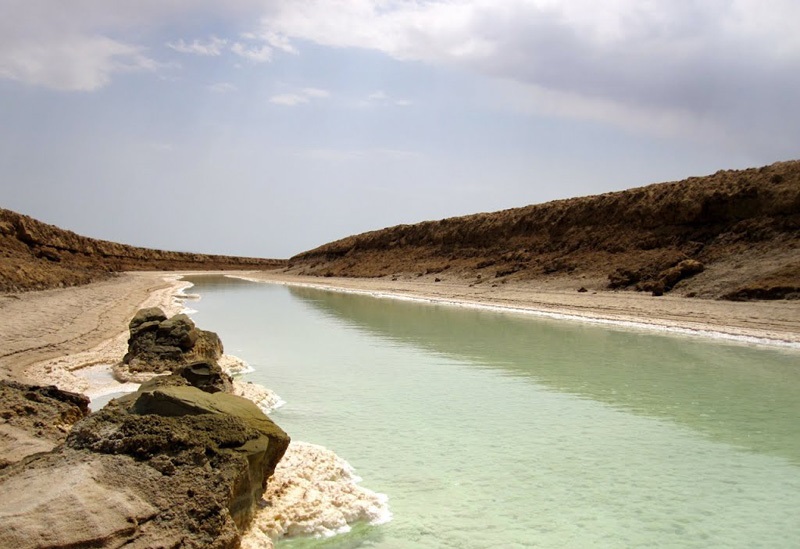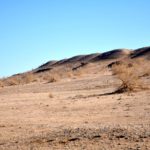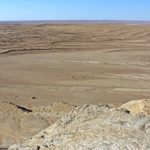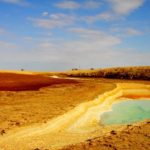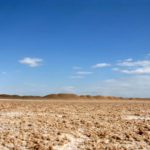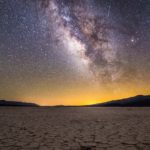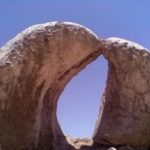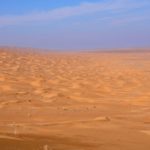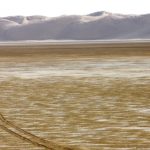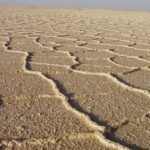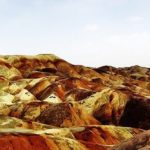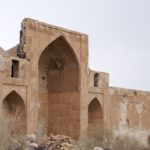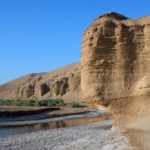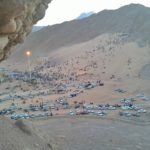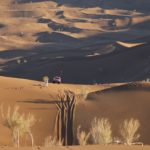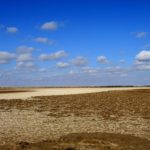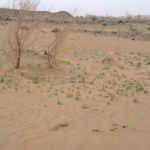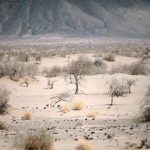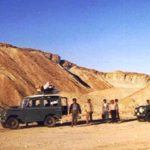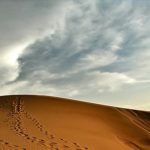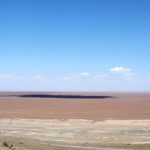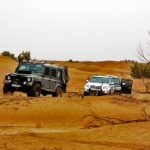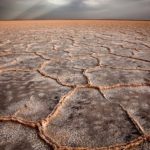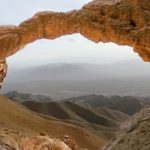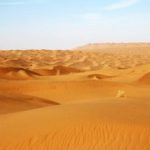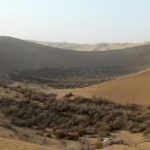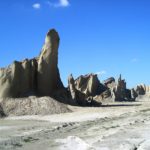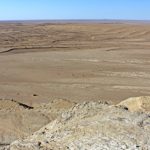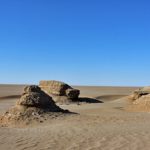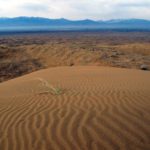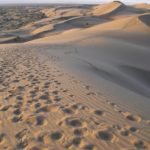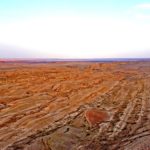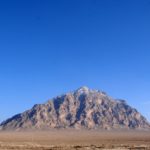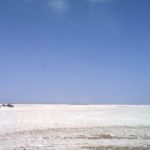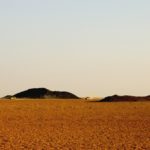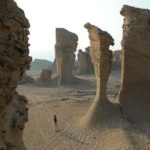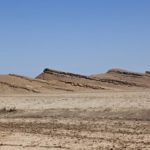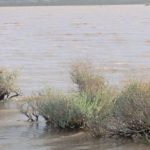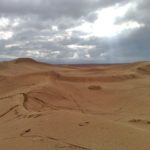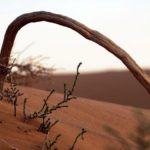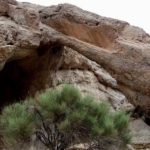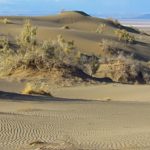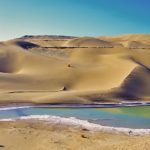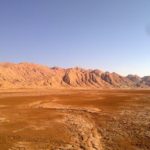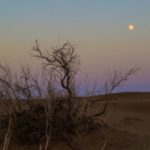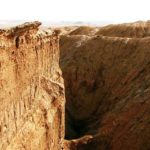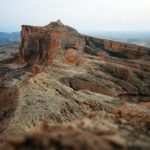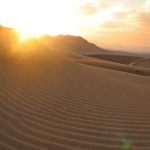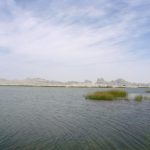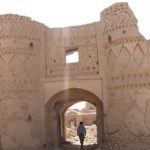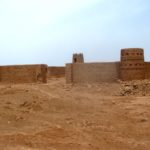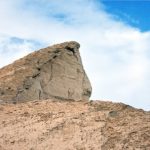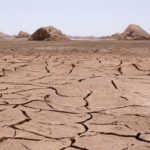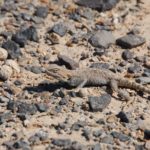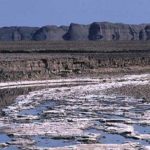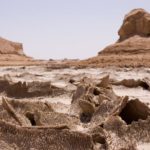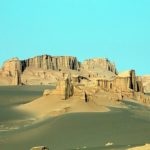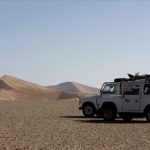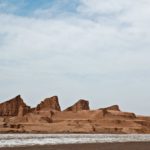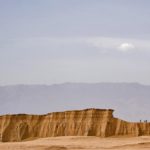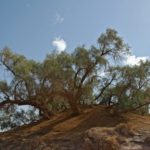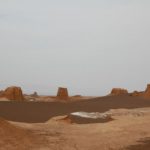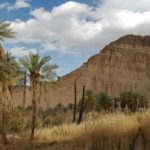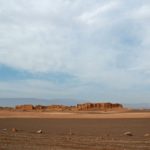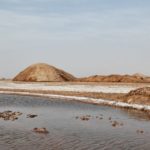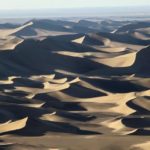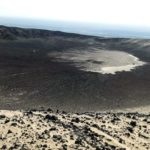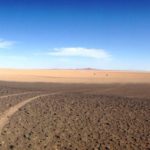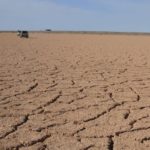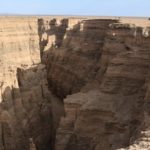Delazian Desert is located in the N3522 east and north E5328 geographical locations in Semnan province and in the northern central Iranian desert (Desert Plain) and south of Delazian village. Delazian village is located 2 kilometers south of Semnan on the other side of the Tehran-Mashhad railway line, after Khirabad and Raknabad villages. The people of this village speak Farsi and Semani dialects.
In most of the desert vegetation is very poor and mostly dry and saline friendly plants are visible. This desert is the confluence of Semnan River Shoreab River and Guinab River that cross the Semnan plain after crossing this area. Due to the presence of these two seasonal rivers, marshy areas are abundantly visible in the desert. On the margins of the marshes are salt domes.
History
The Dalazian Hills (Cheshmeh Sheikh) are from pre-ancient Iran and are located in Semnan city, Delazian village, and this work has been registered as one of the national monuments of Iran on March 1, 2006. Eight kilometers southeast of Semnan, it is located 500 m from the bend of the river Guinab. At the far end of the farmland, a view of eight hills can be seen in close proximity. Although the hillside location does not have a particular geometric shape, there are always eight distances from each side. The hills are not the same height, but they are not much different. The distance between the lower slopes of the southern mound to the lower slopes of the northern mound is more than 2 m and the similar distance between the eastern mound and the western mound is 5 m. The slopes of each of the hills vary, and the smaller hills lie on the hillsides. Depending on the architecture and dimensions of the bricks, these hills date back to the early millennium. These hills have been explored by the profiteers and destroyed by heavy machinery.
Mirk Square is Iran’s largest paleolithic outdoor area. Mirk is remarkable for its age and the number of stone tools found there. Tens of thousands of pieces of Paleolithic stone artifacts, including chips, abrasives, hunting tools, bayonets, etc. have been discovered in the area so far. Although the Paleolithic dates from 12,000 years ago, preliminary studies estimate that the site dates back to 50,000 years ago. Until now, only historical caves have been found in the caves, but the site is unique in its open dimensions. It seems that 50,000 years ago, this region was not a desert and its inhabitants lived on the edge of a lake that has dried up over time and climate change. The site is remarkable in terms of the number of stone tools found and the prominence of these tools in the Middle East, he said.
Tourism spots
The salt marshes of southern Delasian are among the tourist attractions of this region that are of special beauty. The abandoned mine of Dalasian sulfur is another attraction of this area, which is 10 km from the village after salt domes. The Delasian Desert and the Salt Lake are other tourist attractions in the area. Sand dunes on the margins of the sulfur mine
access
After the Semnan Railway Bridge to the south, after crossing the Kheirabad, Raknabad and Mohammad Abad villages, the dirt road leads southeast to the Delazian Desert.

